Centre County is comprised of twenty-five townships and ten boroughs that provide local government for residents. The number of boroughs and townships has grown and changed since the county’s founding in 1801.

The Royal charter of 1681 granted William Penn the power to create local governments to foster settlement and bring justice and administrative services closer to the people. This was primarily accomplished through the creation of counties, which were then subdivided into townships.
Any villages or towns that developed within a township could petition to be incorporated as a borough, and any borough could then petition to become a city under Penn’s charter. All four of these entities – the county, township, borough, and city – had lengthy histories and represented a carry-over from seventeenth-century English practice.
Centre County’s pioneering permanent settlements began in the 1760s in Bald Eagle Valley, the 1770s in Penns Valley, and the 1780s in Nittany Valley. In 1789, the Northumberland County townships of Bald Eagle and Potter were transferred to the newly created Mifflin County. Haines Township was split off from Potter in 1790 and Patton Township was created in 1794 as a part of Mifflin County, also preceding Centre County’s founding.
Townships
Under the laws of the Commonwealth of Pennsylvania, a township is the basic level of municipal government. Townships are divided into two classes by population. All Centre County townships are second-class townships, which is typical for rural areas. While a township with a population of 300 or more persons per square mile can hold a referendum to become a first-class township, none in the county has chosen to do so, although several would be eligible by population density.
Second-class townships are governed by a board of three or five supervisors, elected at large for overlapping six-year terms. Other elected officials may include a tax assessor, tax collector, treasurer, auditors, or a controller, and in some cases a constable. The supervisors (or council in the case of College Township) appoint a secretary and solicitor. Larger townships may appoint a township manager, who is responsible for the day-to-day management of employees and operations.
Townships provide a variety of services that can include water, sewage, road maintenance, police and fire protection, planning and zoning, parks and recreation, garbage and recycling, and code enforcement, although some of these may be contracted from other municipalities or provided through authorities, which are considered separate organs of local government under Pennsylvania law.
Centre County’s townships, listed by the date founded, are:
Potter Township (1774): Potter Township is one of the earliest townships of the county. Originally created as part of Northumberland County, it is named for James Potter, one of the first settlers of Penns Valley. Centre Hall, Potter’s Mill, Colyer, and Tusseyville are villages in the township.
Haines Township (1790): Haines Township was split off from Potter Township and was part of Northumberland when Centre County was created. It is named for Philadelphia land speculator Reuben Haines who owned large tracts in the area. Aaronsburg is the oldest village in the township.
Patton Township (1794): Patton Township was created when today’s Centre County was part of Mifflin County. It is named for Centre Furnace ironmaster John Patton. The hamlet of Scotia, a busy iron mining operation for decades, was in the township.
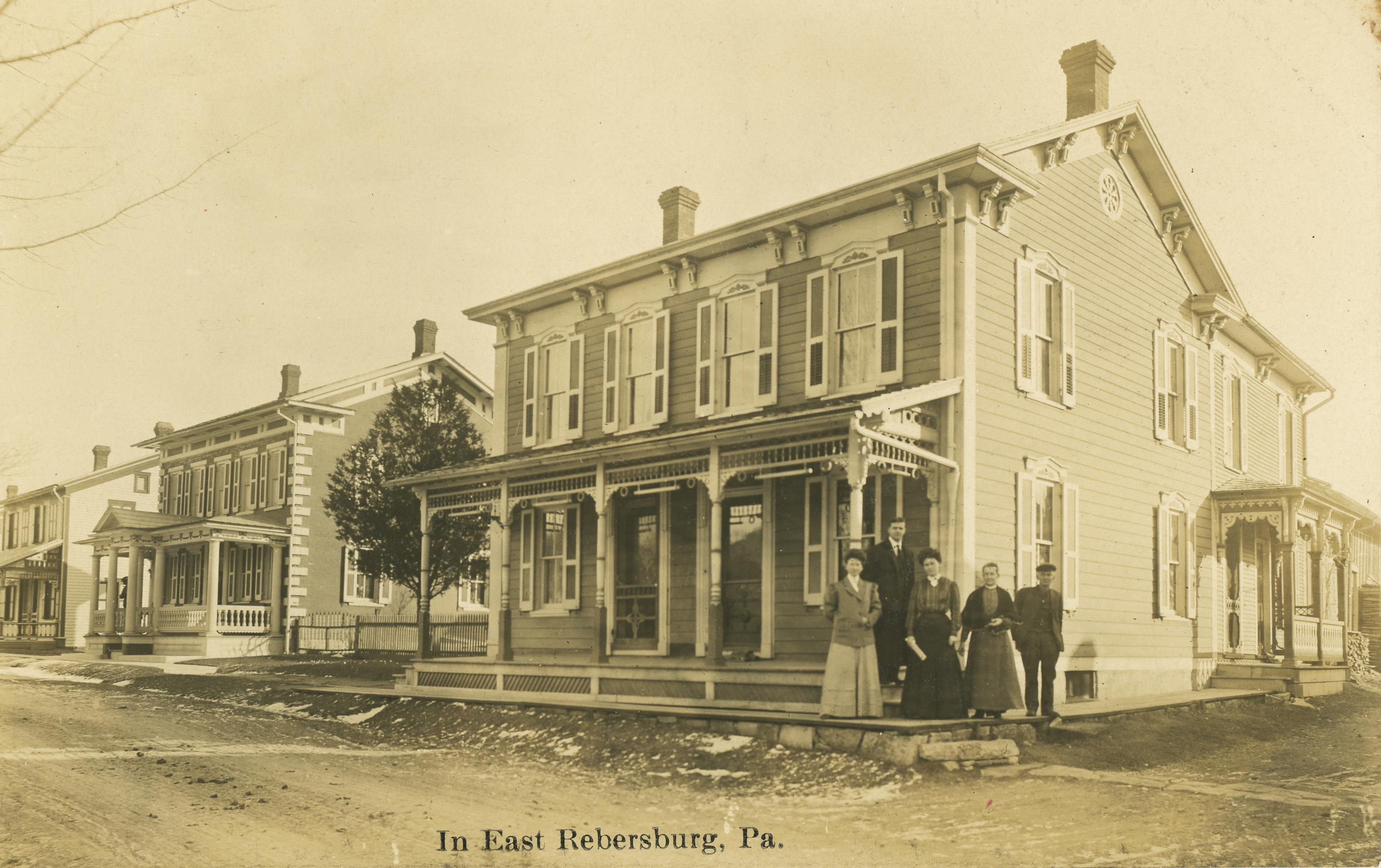
Miles Township (1797): Miles Township is in the Brush Valley area of the county and was split off from Haines Township. It is named for Samuel Miles, a Revolutionary War officer who owned large tracts of land. Rebersburg is the largest community in the township.
Ferguson Township (1801): Ferguson Township was one of the original townships after Centre County was organized and was created from parts of Potter Township and Warriors Mark Township (Huntingdon County). It is named for Thomas Ferguson, one of the original settlers, who operated a mill. Pine Grove Mills is the township’s largest village.
Spring Township (1801): Spring Township was one of the first townships created after the county was organized. It is named for the springs in the area including Big Spring in Bellefonte. Pleasant Gap is the largest community.
Halfmoon Township (1802): Halfmoon Township, added to Centre County from Warriors Mark Township (Huntingdon County), was settled by Quakers, including the Elder and Way families. It is named for the trail marks on trees, which the early settlers thought resembled a half-moon. Stormstown is the principal village.
Howard Township (1810): Howard Township was formed by cutting Centre Township in half along the Bald Eagle Ridge (Centre Township ceased to exist.). It is named for John Howard, owner of the Howard Iron Works. Howard Borough was created out of the township in 1894.
Walker Township (1810): Walker Township was also formed by cutting Centre Township in half. It is named for Centre County Judge Jonathan H. Walker. Hublersburg, Zion, and Mingoville are the principal villages.
Boggs Township (1814): Boggs Township was created out of part of Spring Township. It is named for Andrew Boggs, one of the county’s first settler. Curtin is the main community in the mountainous township.
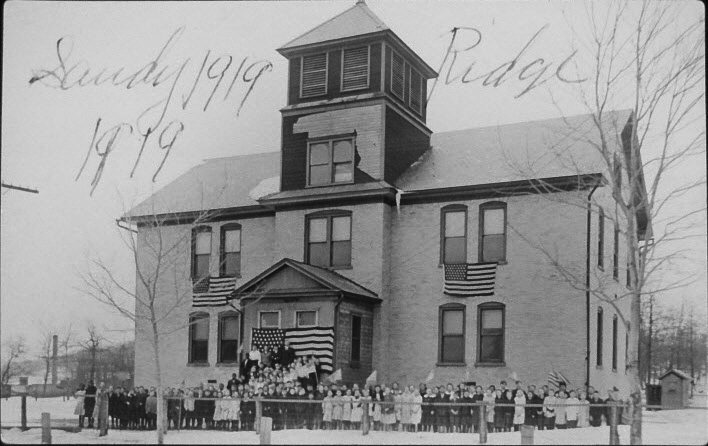
Rush Township (1815): Rush Township was created out of Halfmoon Township and is the largest township in land area. It is named for Benjamin Rush, a Philadelphia physician and signer of the Declaration of Independence. Sandy Ridge is the main hamlet.
Gregg Township (1826): Gregg Township was created from parts of Potter, Miles, and Haines townships. It is named for Andrew Gregg, a member of Congress. Spring Mills, at the confluence of Sinking and Penns creeks, is the principal community.
Harris Township (1835): Harris Township was created from parts of Ferguson, Spring, and Potter townships. It is named for James Harris, one of the founders of Bellefonte. Boalsburg is the largest village in the township.
Huston Township (1838): Huston Township was created from the northern portion of Patton Township. It is named for Charles Huston, a Centre County judge who later became a member of the Pennsylvania Supreme Court. Julian is the township’s largest community.
Marion Township (1840): Marion Township was created when Walker Township was divided into two parts along Sandy Ridge. It is named for Revolutionary War hero Francis Marion. Jacksonville is the principal hamlet in the township.
Snow Shoe Township (1840): Snow Shoe Township was formed from parts of Boggs and Rush townships. It is believed to be named for an Indian snow shoe. Clarence and Moshannon are the main communities in the mountainous township.
Penn Township (1844): Penn Township was created out of the western portion of Haines Township and a portion of Gregg Township. It is named for William Penn, the founder of Pennsylvania. Coburn, at the confluence of Penns and Pine creeks, is the largest community.
Liberty Township (1845): Liberty Township was formed out of Howard Township. Blanchard and Monument are the township’s principal villages. It was given the patriotic sounding name, but the reason is unknown.
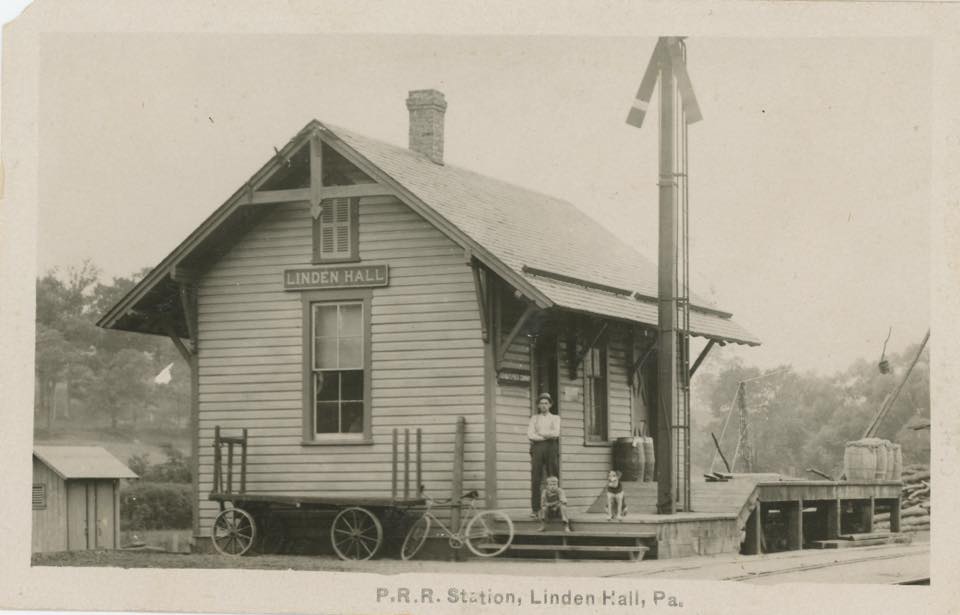
Taylor Township (1847): Taylor Township was also formed out of Halfmoon Township. It is named for Zachary Taylor, who was a general during the Mexican American War and later became president. Hannah is the main community.
Worth Township (1848): Worth Township was formed out of Taylor Township. It was named in honor of General Worth, an officer during the Mexican American War. Port Matilda at the base of Bald Eagle Ridge is the only community in the township.
Union Township (1850): Union Township was created out of Boggs Township. The origin of the name is unclear, but it may have been in recognition of a Union church in the area.
Benner Township (1853): Benner Township was created out of Spring Township. It is named for ironmaster Phillip Benner, who founded the Rock Ironworks.
Burnside Township (1856): Burnside Township was created out of Snow Shoe Township. It is named for Thomas Burnside, president judge of the county courts and a justice of the Pennsylvania Supreme Court. Pine Glen is the largest hamlet.
Curtin Township (1857): Curtin Township was created out of Howard Township. It is named for the Roland Curtin family, owners of the Eagle Iron Works. Orviston and Romola are the main villages in the township.
College Township (1875): College Township was created from parts of Benner and Harris townships to reflect the establishment of the new college that became Penn State. Lemont, Houserville, and Oak Hall are the principal communities in the township.
Boroughs
The earliest boroughs in Pennsylvania were chartered by special laws with discrete characteristics. Unlike townships, however laws creating boroughs spoke to town-related issues like streets, common walls and fences, the right to have a market on particular days, and to regulate weights and measures for various commodities in those markets.
Over time, laws concerning the creation and management of boroughs have evolved and codes have been established, just as for township governments, to provide common practices in municipal governments across Pennsylvania. Unlike townships, boroughs are of one class under Pennsylvania law, regardless of population.

Centre County had eleven boroughs until 2007, when South Philipsburg voted to merge back into Rush Township. All eleven boroughs were created between 1806 (Bellefonte) and 1926 (Port Matilda), with nine of the eleven being incorporated in the nineteenth century.
Boroughs could grow by annexation of neighboring areas seeking services by a majority vote of those in the effected area. Constitutional revisions in 1968 changed this to require referendums that would protect townships from losing taxable residents to boroughs and cities, thus largely ending the growth of municipalities by annexation.
Today’s borough governments are known as a weak-mayor form and consist of an elected mayor and a varying number of council members, depending on whether the borough is divided into wards. Some of the following officers may also be elected: tax assessor, tax collector, treasurer, auditors or controller, and constable. In most cases, the manager is appointed by the council and is the chief administrative officer. Other appointed officers may include the solicitor, engineer, secretary or clerk, police and fire chiefs, health officer, and the planning and zoning commission chairs.
One further aspect of municipal government is the opportunity for a home rule charter, whereby county and municipal governments could elect to govern themselves under a home rule charter, as opposed to the various codes in use for the different categories of county and local governments. In Centre County, only State College Borough and Ferguson Township have elected to operate under home rule charters.
Centre County’s boroughs, in order of incorporation date, are:
Bellefonte (1795, incorporated 1806 from Spring Township): Col. James Dunlop and James Harris bought land and laid out a town along Spring Creek near where Logan Branch joins it and where William Lamb had built a saw mill in 1790. Whether the name Bellefonte derives from the Big Spring or from John Dunlop’s Bellefonte Forge is still the subject of dispute. The town’s strategic location, where the Spring Creek watershed collects before joining Bald Eagle Creek, made it the center of industrialization and the logical county seat in 1800.
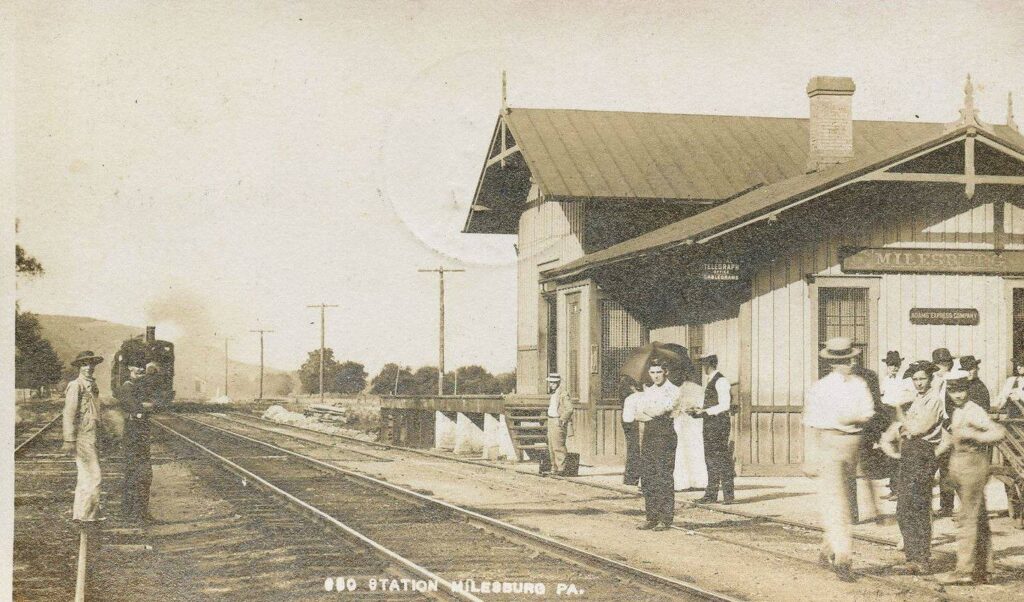
Milesburg (1793, incorporated 1843 from Boggs Township): The town was plotted by and named for Col. Samuel Miles, part-owner with Col. John Patton of Centre Furnace. Milesburg occupied an important transit node in the Bald Eagle Valley, initially hosting a store on the turnpike that passed from Bellefonte, through Milesburg, and on to Philipsburg. Later, it served as a vital junction in the Bald Eagle Valley for both the canal and railroad.
Unionville (1848, incorporated 1859 from Union Township): The site of Unionville originally had a post office named Fleming, but the town area was purchased by Zephaniah Underwood. He and his son William laid out lots in 1848. The community took its name from a Union Church built there in 1830. It became known for its lumbering operations and was at the junction where the turnpike to Philipsburg left the Bald Eagle Valley and began its climb up the Allegheny Front.
Howard (1778, incorporated 1864 from Howard Township): A succession of early settlers found their way to and built homes in the vicinity of what became the town of Howard, the first being David Delong in 1778. Howard hosted mills, stores, and many businesses. The Howard Iron Works was most prominent in the area.
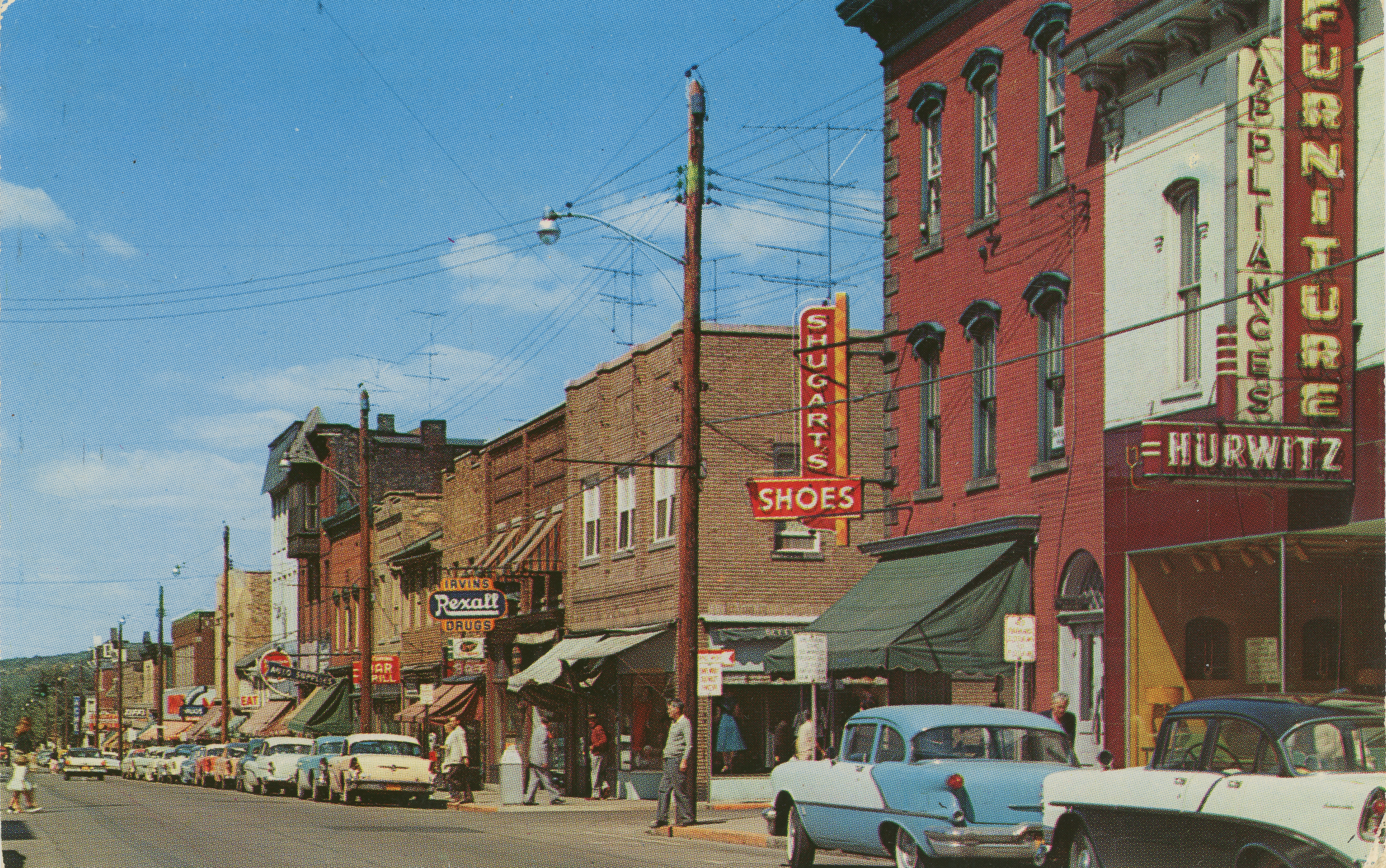
Philipsburg (1797, incorporated 1864 from Rush Township): The settlement was the project of the Philips brothers, English land developers, who bought the property in 1794, and built a road to the area in 1796. Henry and James Philips brought the first settlers there in 1797, but it was their younger brother Hardman Philips who did the most to develop an economic base for the town with the Cold Stream Forge and its famous screw factory.
Milheim (1797, incorporated 1879 from Penn Township): From a purchase of eight acres along Elk Creek in 1797, two mills arose, and a crossroads town with the German name, Millheim, or “town of mills.” A center for the German-speaking population in Penns and Brush valleys, Millheim retained it textile mills industry into the mid-twentieth century.
Centre Hall (1846, incorporated 1881 from Potter Township): Henry Whitmer built a store and hotel at the crossroads near the location of James Potter’s Old Fort. The Scots-Irish Presbyterian families who settled the area in the late 18th and early 19th century were joined by German farmers in the mid-19th as the transportation node expanded from turnpike to railroad. It became best known as the site of the annual Grange Fair.
South Philipsburg (incorporated 1891 from Rush Township.; merged back into Rush Township in 2007): This small borough’s population never rose much above five hundred citizens, and its economy focused on lumber and coal. As jobs faded in the late 20th century, the residents found it difficult to sustain a separate borough government and, under state constitutional provisions, voted to disincorporate and return to being part of Rush Township.
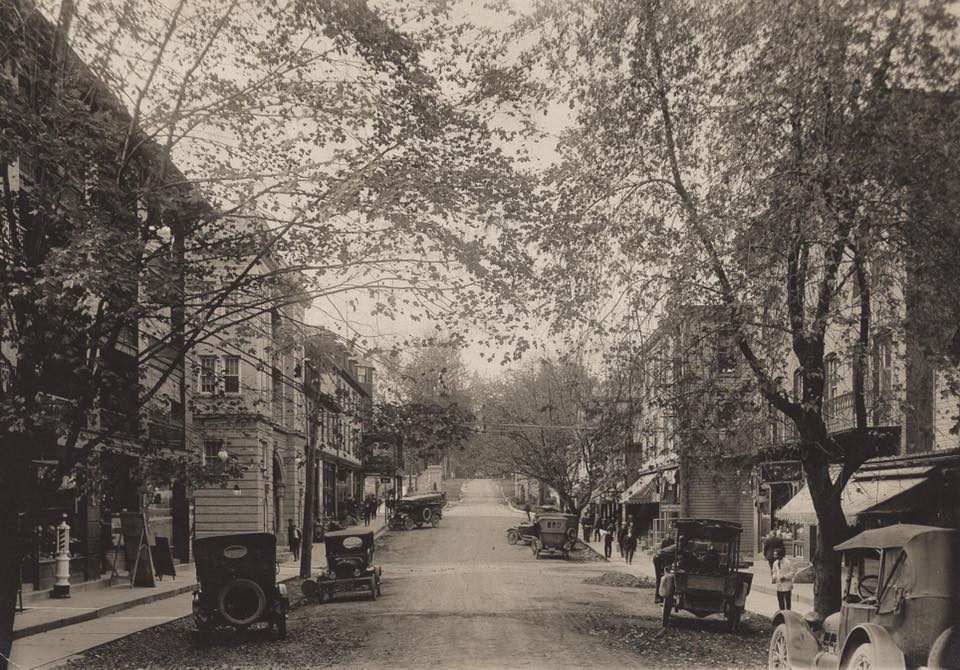
State College (college sessions began 1859, borough incorporated 1896 from College Township): It is often said that Penn State was located on its present site, in part, because of its isolation from large population centers. That would certainly be true as there were only a few houses and a tavern at the present downtown when classes began in 1859. The population grew alongside the college enrollment, and by 1896 a petition by a committee of townspeople and college faculty was granted by the county court and the borough of State College was incorporated. Today it is the largest municipality in the county and the largest borough in Pennsylvania by population (40,501 in the 2020 census).
Snow Shoe (1850, incorporated 1907 from Snow Shoe Township): James Uzzell is credited as being the first settler of Snow Shoe and, like most of the rest of the residents of the region, he came to mine coal. However, when the Bellefonte and Snow Shoe Railroad laid out the town in 1858, he opened a hotel and Snow Shoe became a summer vacation spot as well as a mining and lumber center. Today, the industries are a memory, and a small portion of the population persists from what it once was at the turn of the 20th century.
Port Matilda (1841, incorporated 1926 from Worth Township): The business center of the Upper Bald Eagle Valley, Port Matilda was named for the eldest daughter of Clement Beckwith (although no one knows where the “Port” came from). “Squire” Beckwith owned 1,800 acres surrounding the town and laid out the lots. The new residents developed lumbering, small wood-working shops, a sawmill and grist mill, and a variety of stores as cleared forests made way for farms. Port Matilda was an important modern highway junction in the valley for travel from State College to Philipsburg and Clearfield as well as to Tyrone and Altoona.
Ford Risley & Lee Stout
Sources:
Alderfer, Harold F. Pennsylvania Local Government, 1681-1974 (Bicentennial Edition). State College: Penns Valley Publishers, 1975.
Bell, Raymond Martin. The Townships of Mother Cumberland: including Bedford, Blair, Centre, Cumberland, Franklin, Fulton, Huntingdon, Juniata, Mifflin, and Perry Counties, Pennsylvania. Washington, Pa., 1962.
Centre County Municipal Officials Directory 2023. Bellefonte: Centre County Planning and Community Development Office, 2023.
Centre Region Council of Governments. “Historical COG and More Information.” https://www.crcog.net/coghistory (Accessed November 29, 2023).
“Citizens Guide to Pennsylvania Local Government,” Governor’s Center for Local Government Services, 2018.
General Assembly of the Commonwealth of Pennsylvania. Local Government Commission. Pennsylvania Legislator’s Municipal Deskbook. 5th ed. Harrisburg, 2017.
Lee, J. Marvin. Centre County: The County in Which We Live. [n.p.], 1965.
Pennsylvania State Association of Township Supervisors. “About PA Townships.” https://www.psats.org/about-pa-townships/ (Accessed November 29, 2023).
Post Office Directory of Centre County, Bellefonte, PA., 1890.
Townships. https://en.wikipedia.org/wiki/Township_(Pennsylvania) (Accessed November 29, 2023).
First Published: December 31, 2023
Last Modified: March 6, 2025
